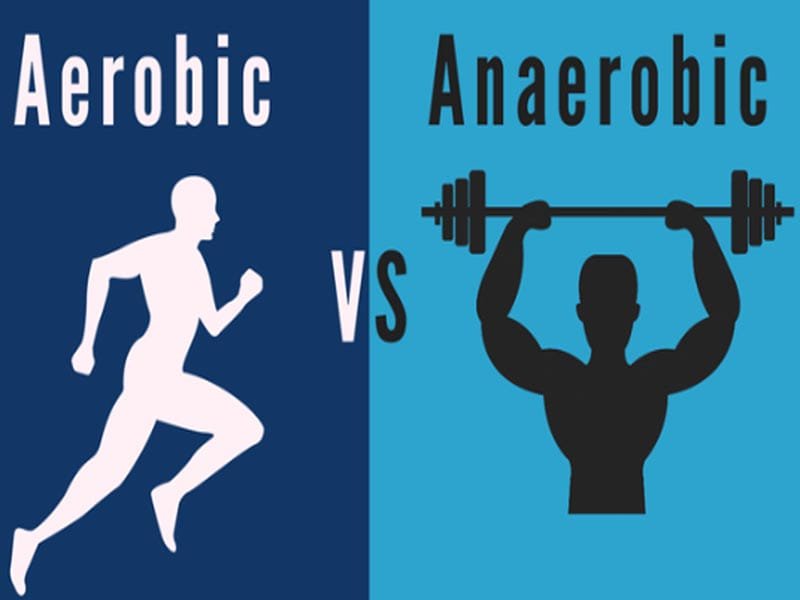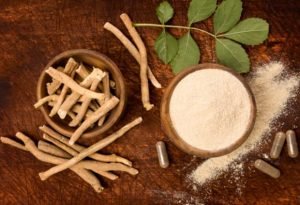
by admin | Jun 4, 2022 | Health
Healing herbs and plant sources for healthy gums and teeth
According to modern studies and centuries of use, a wide variety of essential oils, herbs, and other natural substances enhance oral hygiene and help prevent and repair many tooth and gum problems. Many herbalists advise a preventative, holistic approach to dental care that includes herbs, a better diet, and a regular oral hygiene routine that is effective.
Diet

Diet is the essential component in tooth and gum health, according to dental professionals. Because sugar-loving bacteria thrive in the mouth, it’s better to limit or avoid refined simple sugars in your diet and eat mostly fresh foods free of chemicals, additives, and preservatives. The gums are stimulated by eating whole grains and high-fibre meals like raw carrots and chewing them thoroughly.
A rigorous, consistent oral hygiene practice is essential for healthy gums and teeth in food. The major purpose of oral hygiene is to remove extra bacteria from the mouth since gum disease and tooth decay are mostly caused by excess bacteria dwelling between the teeth and gums, which forms plaque and tartar.
Brush Floss Scrape
Brushing your teeth twice a day and flossing once a day is recommended by dental specialists. Cleaning the tongue using a toothbrush, a commercially available tongue scraper, or even an upside-down soup spoon removes twice as much bacteria from the mouth as simply brushing the teeth.
Brushing the insides of the cheeks, as well as the gums, is also useful. Bacteria can intensify on your toothbrush over time and re-enter your mouth with each brushing; thus, dental specialists recommend changing your toothbrush every two months. You can also use an antiseptic mouthwash to soak your toothbrush in between uses, or you can buy a toothbrush sterilizer.
Brushes using electric rotary motors have been demonstrated to remove much more plaque than brushes with ordinary motors. There are plenty of natural herbal mouth rinses and toothbrush sterilizers.
Natural and herbal tools and preparations.
Natural and herbal tools and preparations such as natural bristle brushes or picks, powders, pastes, teas, and mouthwashes, can easily be incorporated into your daily oral hygiene practice if you want to keep healthy teeth and gums organically. Many of the preparations can be made at home, and health-food stores sell their own versions with the same herbs and components.
Note:
When taking herbs, it’s important to be cautious. If consumed for an extended period or in large quantities, several herbs can be hazardous. Furthermore, the active components in some plants are contraindicated for specific health problems and can react poorly with prescription drugs or other treatments. Therefore, it is advised that you research the herbs that interest you before using them, especially if you are pregnant, intend to treat a child, have special health conditions, or are on prescription medications, and visit a certified specialist if you have any questions or worries.
A few herb and plant uses

Many herbs and natural substances help to keep your teeth and gums healthy by tightening gum tissue, increasing circulation, and eliminating plaque and debris from your mouth. Resins like myrrh and the antiviral bee product, propolis, ( not suitable for vegans) promote the creation of new mouth tissues, Usnea, a lichen ‘said to be’ stronger than penicillin against Staphylococcus germs and strep, bloodroot, and plantain, a common herb that relieves mouth abscesses and inflammation, are just a few examples.
Herbs with a high tannin content, Rhatany (Krameria triandra) and oak apples, help to keep teeth and gums healthy. When administered over time, hawthorn extract tightens the gum tissue. Antimicrobial immune strengthening echinacea extract kills microorganisms in the mouth. Aloe Vera extract is also soothing and beneficial to mouth tissues. Liquorice root is used in toothpaste and mouthwashes because it is anti-inflammatory and antibacterial, preventing plaque growth, and tastes so good.
Many therapeutic herbs have essential oils that are naturally antibacterial, antiviral, and antifungal and increase blood flow to the gums. Tea tree, spearmint, peppermint, eucalyptus, orange, clove, sage, cinnamon, ginger, rosemary, thyme, anise, and fennel, to mention a few, are all beneficial to dental health.
Traditional societies
Many traditional societies make natural, disposable toothbrushes and gum stimulators from the twigs or roots of therapeutic plants. Bay, fir, juniper, willow, eucalyptus, oak, and neem-tree twigs, as well as marshmallow, horseradish, alfalfa, and liquorice roots, have all been used for this purpose. Wooden toothpicks infused in healing essential oils are frequently sold in health-food stores as a rough equivalent.
Make your own tooth pick
Produce your own by putting undyed wooden toothpicks in a glass jar and coating them with a dental-health-improving essential oil. Allow them to soak in the oil overnight before air-drying.
Toothpaste

Not a herb I know but thought I’d pop this in anyway.
Mix a modest bit of baking soda with just enough hydrogen peroxide to make a paste for a simple homemade toothpaste. Apply this paste to both the inside and outside of the gum line, then place the gum stimulator’s rubber point between the teeth and rotate in a circular motion for several seconds. This routine should be repeated twice a day. When the pH within the mouth is overly acidic, many tooth and gum problems occur, and baking soda alkalinizes the mouth.
Tip:
Small amounts of zinc sulfate, folic acid (ground in a coffee grinder or mortar and pestle), one to two drops of tea-tree essential oil or peppermint, or hawthorn, echinacea, or Aloe Vera extracts can also be added. Experiment with various combinations to find the one that works best for you. Alum, salt, blackened eggplant, turmeric, myrrh gum, white oak, or prickly ash bark are some more helpful tooth powder constituents.
Interesting note:
Wrapping tooth powders in gauze and inserting them in the corners of the mouth nightly has been said to have healed some cases of severe gum disease in just a few months.
Oil pulling

Coconut oil can be used daily for oil pulling , swirl the oil around the mouth for a few minutes, sucking the cheeks in and pulling out debris from teeth and tissues, spit out and rinse.
The ideas referenced in this article for helping you with your teeth and gums can usually be used daily and are for information purposes only and not to impart any form of medical advice. Always do your own research and do not take anything without checking with your doctor, do check any possible allergens and interactions with other herbs or medications you are taking before embarking on any herbal or essential oil protocol.
If you already have a toothache, you should not use these treatments to treat that. This should be taken care of as soon as possible by your dentist. In some cases, home treatments like saltwater or clove oil can assist relieve discomfort until you can seek medical treatment. Meanwhile, it would help if you utilised these natural remedies as prophylactic steps to reduce the chances of toothaches.
Clean teeth are happy teeth.

by admin | Jun 4, 2022 | Fitness
Anaerobic VS Aerobic Training – Which One Is Better?
When it comes to training, whether it is professional sports or general training, there are two main types of activity one can do. Those two types are namely “anaerobic” and “aerobic” training, each of which provides a different stimulus for the body and thus, a different end result. In this article, you’re going to learn more about these two types, which one is better for specific goals, and how to combine them. So without further ado, let’s get to it!
Anaerobic & Aerobic Processes
Though these two terms may sound a bit complex, their meaning is quite simple The word “Anaerobic” comes from the following Greek words:
- An – Meaning “without”
- Aer – Meaning “air”
- Bios – Meaning “life”
In simple words, all anaerobic processes in the body do not require oxygen to run. Oppositely, all aerobic processes in the body DO require oxygen to function.
Examples Of Anaerobic Activities

Anaerobic training activities are basically any type of training which requires you to do a short, power-burst bout. Here are some examples of anaerobic training activities:
- Sprinting
- Weightlifting
- Climbing
- Broad jumping
Because of the nature of anaerobic activities (short, power-burst movements), this type of training mainly develops muscle strength, size, strength endurance and explosiveness.
Examples Of Aerobic Activities

Contrary to anaerobic activities, we have aerobic activities, which are basically any low-intensity exercises that are long in duration. Here are examples of aerobic activities:
- Jogging
- Skipping rope
- Swimming
- Cycling
Unlike anaerobic activities, aerobic training mainly develops the cardiovascular & respiratory systems (heart & lungs). With this type of training, your body becomes more efficient at releasing energy with the help of oxygen.
Which Type Of Training Is Better?
As we already established, anaerobic training will stimulate the development of your musculature and its main properties – Strength, strength endurance & explosiveness. On the other hand, with aerobic training you will improve the work of your heart and lungs.
And so, the answer to the question “which type of training is better?” is quite simple… It depends on the context!
Are you someone who wants to look better? Focus your training around anaerobic activities and throw in some aerobic activities here and there. Or, if you’re someone who just looks to improve their endurance in the long run, focus on aerobic activities that are low in intensity and long in duration.
Ultimately, if you’re not a professional athlete, you would be best off combining both types of training and tipping the scales in favor of the one that matches your goals the most.
Conclusion
Though most people just LOVE to compare different types of training and dub some “better than others”, one thing remains true… That is namely the fact that the body is a complex machine, capable of a MULTITUDE of movements. The more movements you do and the more you engage in different types of activities, the more you develop the systems and components (muscles) that make those activities possible.
Therefore, this approach will lead to a functionally and visually better physique. What is YOUR approach to training? Comment down below!

by admin | Jun 4, 2022 | Fitness, Health
An Hour A Day For A Better Life!
Nowadays, most people see training, nutrition and other self-care activities as something time-consuming. But what are the things you can do on the day to day basis, without using up most of your wake time? Well, the truth is there are MANY small things you can do on the daily basis to improve your overall quality of life.
In this article, we’ll give you our best tips and activities and it is up to you to schedule them into a convenient, one-hour routine, every single day! If you do that consistently, that’ll be nearly 400 hours of work on yourself for a year.
Guess that will give results. Now without further ado, let’s get to it!
What Can You Do For Your Body?

You have to realize that establishing certain habits that will nourish your body is not all that hard. Especially when you compare that to the vast amount of things you are NOT doing. Seriously, think about it – All your bodily functions and processes are autonomous (automatic).
- You don’t have to think in order to digest
- You don’t have to consciously poop (it just happens to you, but you can hold it)
- You don’t control any of your bodily functions for the most part
It appears that the community of cells that your body is, is just a smart organism that’s trying to keep you alive and healthy. Here’s what you need to do in order to support the life of your community of cells.
Be active/Include training
Optimal health occurs when all your bodily systems are working normally and with balanced chemistry. Following that train of thought, we can say that you can’t just ignore one of the biggest systems in the body – the musculo-skeletal system. As complex as it is, the human body was MADE to move, which is why a stagnant, sedentary lifestyle may increase the risk of worsened quality of life.
And though most people think of the gym when they hear “training”, lifting weights is by far not the only activity you can and should do. Do some weight lifting, do some bodyweight work, some hikes, climbing, swimming, running, sprinting, etc. Enjoy the vast variety of activities your body can do and it will thank you!
Eat nourishing foods

Though the body synthesizes many of the nutrients it needs on its own, there are certain essential nutrients that the body needs, but can’t produce. This is why eating the proper foods in the right amounts, is essential when it comes to giving the body what it needs. Protein and fats are the two essential nutrients that play major roles in many important bodily functions.
Carbohydrates on the other hand are not essential, but can be a good tool to use when trying to optimize high-intensity training performance. Here are our best whole food picks for you to include in your nutrition plan:
- Beef
- Eggs
- Fish
- Avocado
- Mangoes
- Dairy products
- Sweet potatoes
- Honey
If you are an omnivore, animal products should be at the core of your diet, as they provide plenty of essential proteins, fats and are very satiating, making it less likely for you to overeat.
Manage stress
Even though nutrition and movement are of prime importance for your wellbeing, stress can be the make or break factor, due to its nature. Excessive stress shuts down the body’s growth, as well as the immune system and also, kicks the heart and brain out of coherence (sync). This inner-created chaos then translates to feelings, emotions and actions in the outer world, making your overall experience bad.
Without a doubt, stress management may sound easy, but it is not the easiest thing to practice. Take 10-20 minutes of your day to sit down in a quiet room, undisturbed and reflect back on your day. Analyze which stress factors were persistent and put a conscious intention to react in a different way to those things.
Remember, stress management is about an inner regulation of your reactions to things.
Conclusion
For the most part, your body works automatically and all you have to do Is use it the right way and feed it with the right food, fluids, thoughts and awareness! From then on, all the right mindsets, actions and emotions will come into place and set a life flow of greater quality. Are you ready to make the change?

by admin | Jun 4, 2022 | Fitness
Habits Of Fit People
It’s not a surprise that people who go to the gym tend to be in better shape than those who don’t. And without a doubt, the reason why they are healthier and fit resides within their habitual life! But what are the specific habits of people who make fitness a priority? This is exactly what we’re discussing in today’s article! Keep reading and steal some of these habits from the fittest people around!
#1 Waking up Early

Most people who are into fitness have one common goal: waking up early. This is because they understand that waking up early is one of the key habits of fit people. When you wake up early, you have more time to work out, eat a healthy breakfast, and get on with your day. Waking up early also allows you to avoid the temptation to skip breakfast or hit the snooze button. Because let’s be real, one of the most common excuses to not take care of your body is “I don’t have time.” And if you wake up early, you’re just opening yourself time windows to do what you have to do!
#2 Exercising

Exercising is one of the key habits that fit people have. So you see, it’s not some magical thing that they do that gets them in shape. Having a fit body is simply the side effect of being a functional human being! And frankly, it’s not about going all-out in the gym every day. It’s simply a matter of doing small steps, regularly. So you see, getting in shape isn’t difficult. It just requires some effort and dedication. Lift some weights. Do some hiking. Do some bodyweight exercises and yoga! Explore all the ways in which your body can move!
#3 Meal Prepping

Meal prepping is a great way to make sure you have healthy, home-cooked meals without having to spend hours in the kitchen. By preparing your food ahead of time, you can save both money and time. You’ll also have control over the ingredients and portion sizes of your meals. And also, needless to say, you will be able to relax and unwind with a relaxing kitchen session! So you see, this is just another core habit of fit people, to help them save time and take care of their bodies!
#4 Non-Exercise Activity
One of the other considerations is that fit people are generally more active in their daily lives. They are also more likely to have a better self-image, which allows them to be more productive and focused on their goals. When you’re healthy and fit, it shows in your attitude and the way you carry yourself. This, in turn, encourages you to stay active and maintain a healthy lifestyle. While most people view activity and exercise as a chore, it really is just a fundamental thing for fit people!
#5 Stress Management

Last but not least, fit people are really good at stress management! What does that have to do with being fit, you may ask? Well, it’s quite simple – As you have probably figured by now, getting and staying in shape requires a lot of effort. And frankly, unmanaged stress makes it twice as hard to stick to a routine that requires effort.
If you ask any fit person what’s at the core of their routine, you’d hear about things like conscious thought management and meditation!
Final Thoughts
So what do all of these fit people have in common? Besides the obvious things, like working out and eating healthy, they have formed some good habits. And as we all know, it’s easier to stick to something when it becomes a habit. So if you want to be one of those fit people (or just get healthier), start forming some good habits today.Now tell us, how are you planning to become one of the fittest people around? Let us know in the comments below!

by admin | Jun 4, 2022 | Mind
THE GROWTH MINDSET VS THE FIXED MINDSET
The difference between an individual with a growth mindset and a fixed mindset is like the sky and the earth. When it comes to the one with a growth mindset, he believes knowledge and creativity are traits that can be fully fledged over time. Folks with this type of mentality constantly put initiative and take action in the quest to develop their intellect and skills.
On the other hand, a fixed-minded individual skives obstacles, give up easily and is intimidated or chickened out by seeing other people’s excellent performance. This is because a fixed mentality views intellect and creativity as something that “is,” rather than something that can be altered for the better.
GROWTH MINDSET
BENEFITS

According to scientific research, a growth mentality is linked to motivation and overall success. For instance, teaching growth mentality to junior high school students resulted in improved enthusiasm and academic achievement, according to another report.
A growth mentality was found to be particularly helpful for students studying science and mathematics, according to the researchers. Other crucial benefits include reduction of burnouts, health issues such as stress and anxiety are reduced, and behavioral issues that are limited if not avoided overall.
WAYS TO IMPROVE
According to research, the brain may form new associations, expand old ones, and increase the pace at which pulses are transmitted. These findings show that anyone with a fixed mentality will gradually shift to a growth mindset if it’s something they’re committed to.
Some of the approaches to cultivate a growth mindset include believing you can potentially rewire your brain to boost your IQ, pushing out of your comfort zone, seeking new experiences, accepting failure as part of success, and getting rid of the growth mindset.
FIXED MINDSET
DISADVANTAGES

A fixed mind approach prevents you from learning new skills, experimenting with new ideas, formulating new tactics, and, most importantly, thinking big. It ties you down in fear and doubts that can derail you from taking action.
In case you find yourself saying, “I’m just not good at it.” And, “Even if I tried, I couldn’t improve,” take a pause then rephrase your self-dialogue to something more optimistic.
I know, it’s scary and seemingly impossible but you can do it. It’s something most successful people have had to overcome and you can do it as well.
CONCLUSION
We often exaggerate the importance of a particular event while underestimating the importance of making better everyday decisions such as running 5 days per week.
We believe that obtaining “that internship,” being published in “that media channel,” or losing “those 30 pounds” would allow us to become the individual we want. We fall prey to a predetermined mentality and assume that we are determined by the outcome.
In terms of behavior adjustment, building a better brand, rather than worrying about outcomes like your success or presentation, is the first step toward long-term improvement.
For a quick recap, it’s possible to shift from a fixed mindset to a growth mindset. For a comprehensive guide, simply click here and start your growth-mindset journey.


























